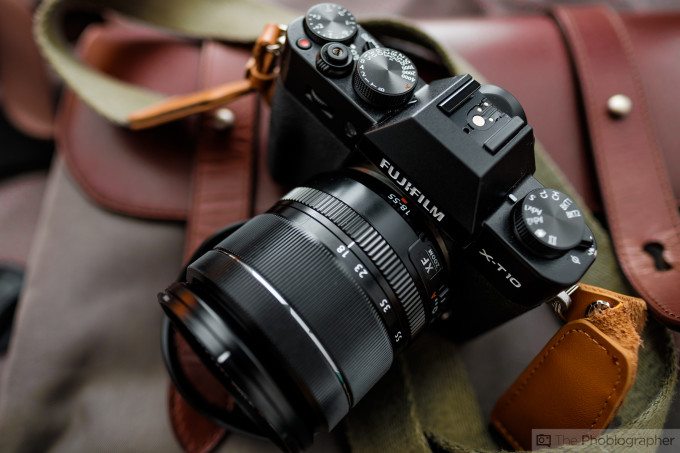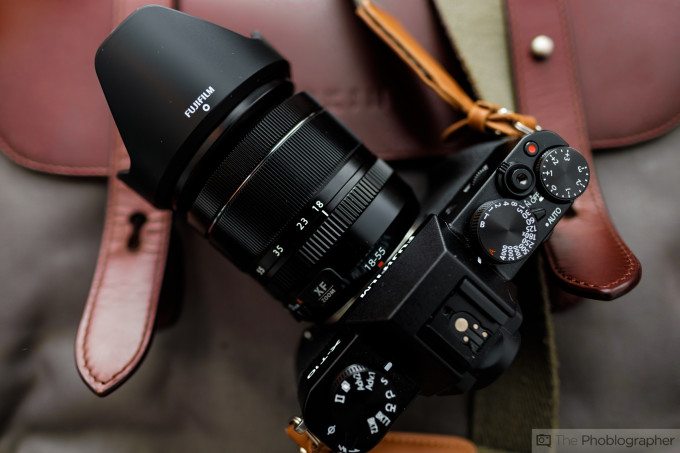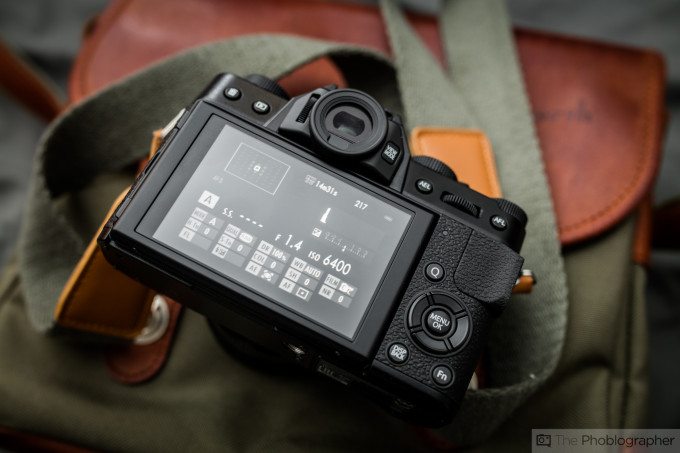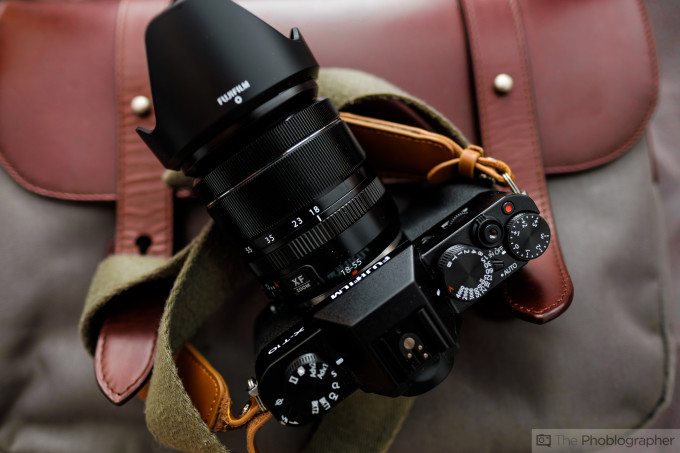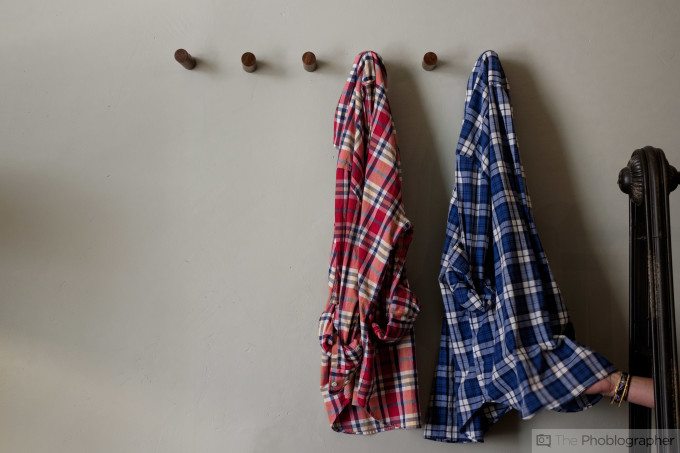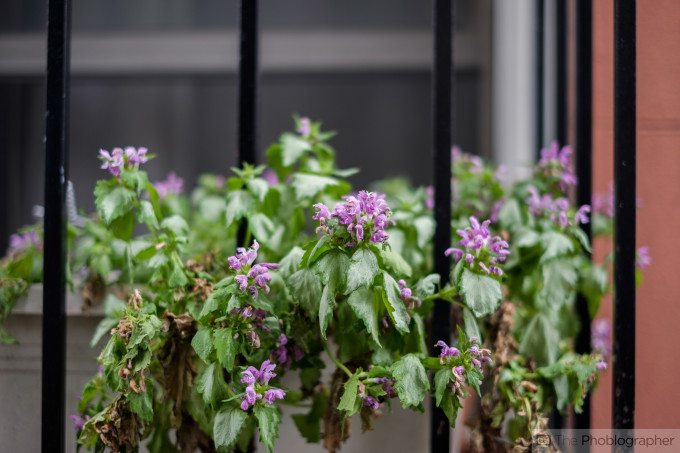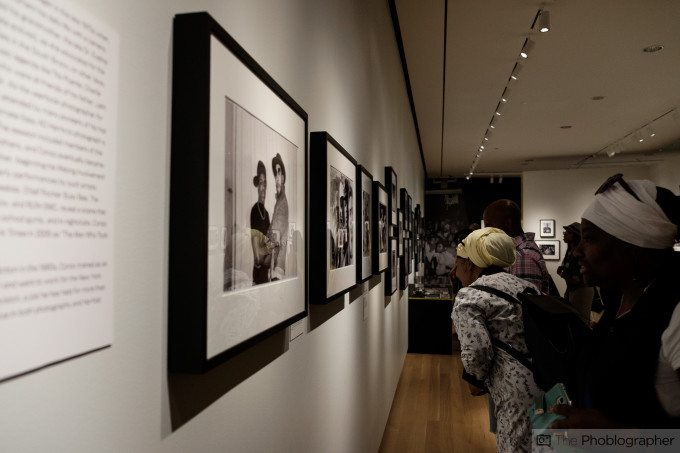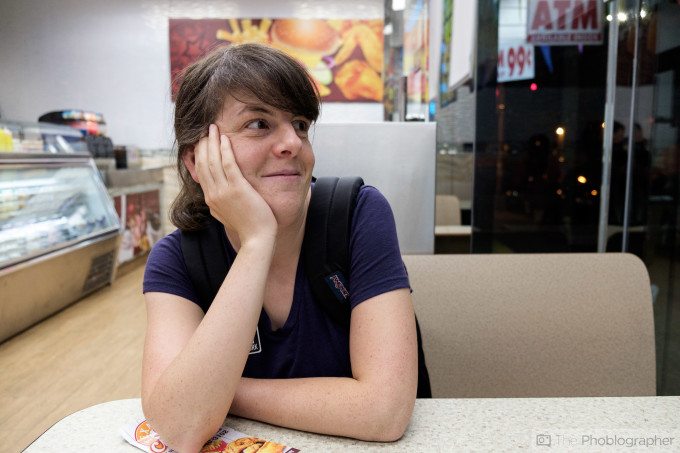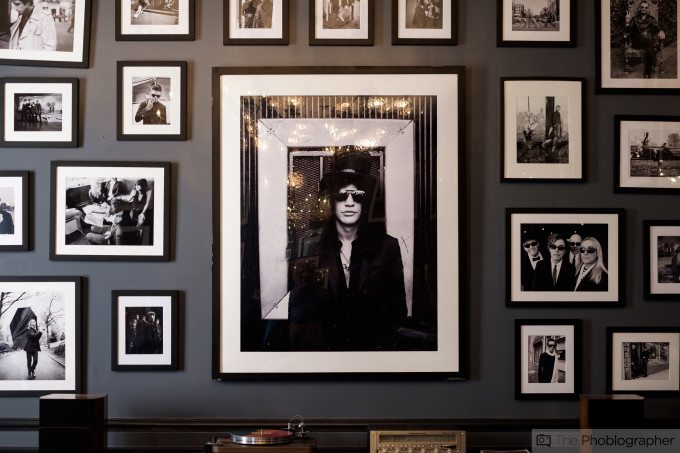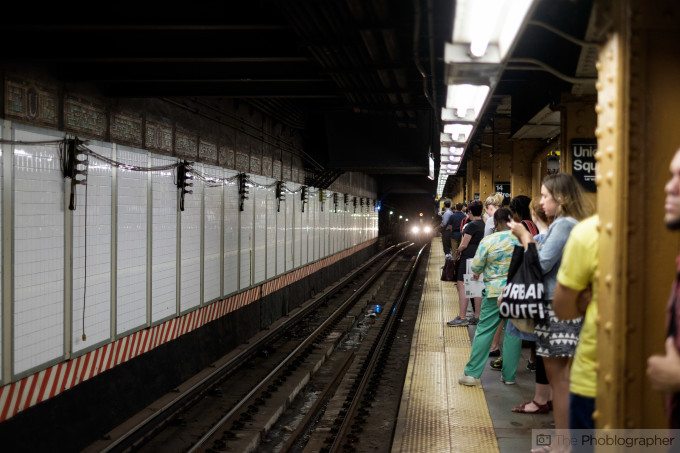Fujifilm’s strategy of taking their pro line and stripping down a bit for the consumer has been most recently reflected with the Fujifilm X-T10. Borrowing lots from the X-T1, this srategy is used often in the industry but with Fujifilm being the newest ILC manufactuer on the market, it’s quite amazing that it happened so soon to its flagship DLSR-style mirrorless interchangeable lens camera.
The Fujifilm X-T10 strips out the weather sealing, removes lots of the dials, and gives the camera a more simplistic interface. But that doesn’t mean that since it’s been stripped down that it can’t take incredible photos.
In fact, quite the opposite is the case here.
Pros and Cons
Pros
– Excellent image quality. Easily the best we’ve seen from a non-flagship level camera with an APS-C sensor.
– Incredible highlight detail recovery. There is nothing like this in the same price range
– Good shadow detail recovery though Sony can be a tad better
– Ergonomics that begin to grow on you
– The best battery life of any Fujifilm camera we’ve tested
Cons
– A dedicated ISO dial would have been really, really nice
– Shutter could be a bit quieter
Gear Used
We tested the Fujifilm X-T10 with the Fujifilm 18-55mm f2.8-4, 35mm f1.4 and the Adorama Li-Ion flash and radio.
Tech Specs
Specs taken from the B&H Photo listing
- 16.3 MP APS-C X-Trans CMOS II Sensor
- EXR Processor II
- 0.39″ 2,360k-Dot 0.62x OLED Viewfinder
- 3.0″ 920k-Dot Tilting LCD Monitor
- Full HD 1080p Video Recording at 60 fps
- Built-In Wi-Fi Connectivity
- Intelligent Hybrid AF with 77 Areas
- Up to 8 fps Shooting and ISO 51200
- Film Simulation Mode, Electronic Shutter
- Built-In Pop-Up Flash
Ergonomics
The Fujifilm XT10 has an APS-C sized sensor at its heart with a 1.5x crop factor. The rest of the camera’s front is really simplistic with a lens release, control dial, and focusing type dial. You’ll also see a bit of a grip here on top of the leatherette textured feel.
Come to the top of the camera and you’ll start to see lots more. Here you’ll find the exposure dial, custom function button, video record button, hot shoe, shutter release and on/off switch. Plus there are two more dials in the form of exposure compensation and the drive mode. Unlike the X-T1, if you want to have quick access to the ISO, you’re better off programming it to another dial of some sort.
The camera’s back houses the viewfinder, LCD screen, button, dials and a little extra grip to support your thumb. If you’re more of the type of person who prefers to use the LCD screen, then you’ll enjoy that it tilts forward and backward.
Build Quality
Though it isn’t weather sealed like its bigger brother the X-T1, the X-T10 still feels fairly solid overall. Olympus and Sony’s comparable offerings both feel beefier whereas this is much more elegant. If you’ve been in photography for many years, think Canon 5D Mk II vs the D700. The Canon offering was much more elegant feeling while Nikon’s was a workhorse meant to be abused.
During our tests though, the camera endured a bit of a rustle and bustle inside of a camera bag getting beat back and forth in the NYC subways due to cramped conditions. Nothing happened to the camera at all. Not a single piece feels cheap, but you should be well aware that there are much better builds available on the market.
Ease of Use
Fujifilm went with their more simplistic menu interface with this camera. It’s pretty much the same on the X30. In some ways it’s quite nice, but if you’re so used to the X-Pro1 and the X-T1 then you’ll kind of look at this one and scratch your head at times.
The toughest problem with us was connecting to WiFi the first time around. Once we got it though, the process was straightforward.
Still, we wish that Fujifilm converted RAWs to JPEGs on transfer to the camera so that the user only needs to shoot RAW photos.
Autofocus
When using the 35mm f1.4, this camera seems to focus a bit faster than the X-Pro1 and not as fast as the X-T1.
As I write this review on a Thursday night, I literally got up before I typed this sentence to try out the 18-55mm lens on the two cameras followed by the new 90mm f2 which we now have in for review. Again, the statement stands when the cameras are both set to their smallest focusing point–which is the most accurate yet slowest way to focus.
When the points are increased to maximum size, the performance is also almost on par with the difference of less than a quarter of a second. In real life that won’t mean very much. If you’re shooting street photography you’ll go with the company’s excellent wide angle lenses and use zone focusing.
Don’t let this one get to you so badly though. For what it’s worth, Fujifilm’s entire lineup of cameras still focus slower than Sony, Olympus, Panasonic and Samsung.
Metering
In a Sunny 16 test, we found the metering to underexpose by 1/3 of a stop, which isn’t all that bad. We found the absolute best metering to come with spot metering mode or with evaluative and overexposed by around a stop or a bit less. With the company’s excellent highlight recovery, this won’t matter all too much.
Image Quality
Many cameras tend to go in and out of my hands because of the nature of this work. But nothing has truly amazed me like the image quality that I get from this APS-C sensor (in similar realms that is.) With Fuji’s color profiles, you can render so many different looks that it’s quite insane. It’s much better than what any other company out there can do.
High ISO Output

The high ISO output of the Fujifilm X-T10 is quite good. The noise is kept down very well at ISO 6400 and the details are all there. The only trick is balancing the two in Adobe Lightroom.
For what it’s worth, if you look at the images as a whole and not zoomed in at 100%, it’s honestly really tough to spot any noise at all. If a user just wanted to go ahead and shoot JPEGs with this camera (which many do) then they’d have no real fear of dealing with ISO noise.
RAW File Versatility
What we were most impressed by is the highlight recovery versatility. Here’s the original image up top.
This is the edited image that I personally liked, but the versatility can go even further.
This is what’s possible with a little bit of extra Lightroom knowledge. By tweaking the colors and messing with the channels, you can create a very usable image and get lots of details back.
Lots of details can also be rendered from the shadows.
Extra Image Samples
Conclusions
Likes
– Phenomenal image quality
– Good high ISO output
– Sharp details with the best of the company’s lenses
– Lightweight and portable package that makes you want to carry it everywhere
Dislikes
– Give me a damn ISO dial
It’s been a little while since I awarded a camera with an Editor’s Choice Rating due to trying to overhaul evaluations over how camera companies are stepping up their game. The Fujifilm X-T10 really deserves it. By far, this is the best APS-C sensor of any camera in a comparable realm and it shows with the image quality. Fujifilm took a great deal from its award-winning X-T1 and put it in a smaller package for a consumer that can’t reach for fruit as high. The result: a really kick ass camera.
So what do we hate?
I really want my ISO dial back. Yes, you can program one of the other dials to function like it but then you need to press it in and then turn the dial. The ISO dial on the X-T1 and the Sony A7 are really what any modern photographer really needs these days.
The Fujifilm X-T10 receives five out of five stars and wins the company’s coveted Editor’s Choice award. Want one? Check the B&H Photo listings for availability.
Recommended Lenses and Accessories
Fujifilm 27mm f2.8: A pancake lens goes perfectly with this camera’s small size.
Fujifilm 35mm f1.4: If you’re going to get any lens for this camera, this is probably the single one you’ll need. With great image quality and a small size, you’re taking the most advantage of the duo together.
Fujifilm 18mm f2: Though it isn’t really a pancake lens, it’s close. And it’s still darn good.


